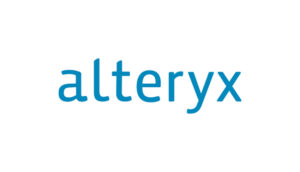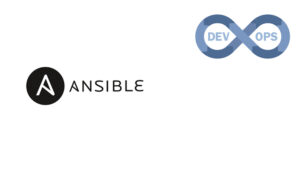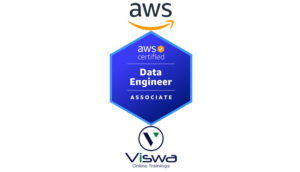Linux Admin Certification Training
One of the top providers of online IT training in worldwide is VISWA Online Trainings. To assist beginners and working professionals in achieving their career objectives and taking advantage of our best services, we provide a wide range of courses and online training.
Learners : 1080
Duration : 30 Days
About Course
Our Linux Administrator Training includes instructions on how to set up, maintain, and install an Enterprise Linux system in a networked environment. The most fundamental administrative responsibilities are covered, such as creating and managing user accounts, creating and maintaining file systems, deciding on and implementing security measures, and installing and administering software programs. Thanks to the availability of knowledgeable trainers and instructor-led training sessions, Linux Server Online Training sessions can easily allay your concerns and provide the precise guidance that is needed. Enrol right away to get certified.
Linux Admin Training Course Syllabus
✔ History of UNIX & Linux
✔ Basic Concepts of Operating System
✔ File System of Linux Admin
✔ Creating, Removing, Copying, Moving files & Directories
✔ File Permissions
✔ Soft link & hard links
✔ Introduction to VIM
✔ Basic VIM workflow
✔ Using Grep
✔ Pipelines & Redirections Basic Regular Expressions
✔ Installation of Linux Graphically
✔ Kick Start Installation
✔ Network Installation (using ftp, NFS & HTTP)
✔ Combining kickstart & N/W installation
✔ Complete automated installation
✔ Creating & Deleting Users
✔ Modifying Users Profile
✔ Files related to User Administration
✔ Creating & Removing Groups
✔ Adding & Removing Users to Groups
✔ Applying File System Access Control List (ACL)
✔ Restricting a particular user to use a file or directory
✔ Basic SELinux Security Concepts
✔ SELinux Models
✔ Display & Modify SELinux Models
✔ Display & Modify SELinux File Context
✔ Diff type of FS like ext3,ext4,xfs etc
✔ Simple Partition & File System
✔ Managing Swap Space
✔ Increasing & Decreasing swap spaces
✔ Mounting a File system & Making it Permanent
✔ Exploring CDB and PDB databases
✔ Components of LVM
✔ Implementation of LVM Storage
✔ Creating Volume Groups & Logical Volumes
✔ Extend a Logical Volume
✔ Extending & reducing a Volume Group
✔ FS Related issues in Real-time
✔ Introduction to Networking and Connections
✔ Understanding Network Configuration Files in 6&7
✔ Assigning IP Address
✔ Troubleshooting
✔ Using Cron jobs
✔ Restricting Users from using Cron jobs
✔ Introduction to firewall services
✔ Allowing a service/port in firewall
✔ Removing a service/port in firewall
✔ Saving and making the rules permanent in firewall
✔ Monitoring Processes
✔ Terminating & Governing Processes
✔ Setting up Priority of the Process
✔ usage of Top command
✔ Boot Process Repairing Boot Issues
✔ Real-time Boot issues
✔ Dealing with SE Linux to recover root password
✔ Recovering the Superuser Password
✔ Recovering Boot Loader
✔ Introduction to systemctl command
✔ Starting, stopping, reloading & refreshing service
✔ Managing Services
✔ Confirm Service Availability
✔ Using SSH
✔ Generating Keys
✔ Copying Pub Keys using “ssh-copyid” command
✔ Password Less Logging between two Systems
✔ Sync data between two servers using encryption
✔ Usage of dry-run in rsync
✔ Configuring SUDO
✔ Limiting SUDO Users
✔ Checking logs of SUDO users, Real-time issues & usage.
✔ Backup of data using tar
✔ Applying gzip on tar file
✔ Uncompressing tar and gzip files
✔ Using rmp command
✔ Using yum command
✔ creating yum repository
✔ configuring yum server
✔ configuring yum clients
✔ Using FTP
✔ Restricting Users for FTP
✔ Demons and workflow of NFS demons
✔ Configuring NFS server
✔ Mounting NFS Directory on Clients
✔ Automounting NFS
✔ Configuring SAMBA service for file sharing with Windows
✔ Connecting SAMBA server from Windows Client
✔ Configuring DNS server
✔ Integrating DSN server with clients
✔ Configuring Apache webserver
✔ Redirecting the website
✔ Virtual web hosting
✔ Port-Based web hosting
✔ Name-based web hosting
✔ Configuring Postfix for sending the mails
✔ Configuring Dovecot for receiving the mails
✔ Testing the mail flow
✔ Squid Proxy
✔ Configuring squid proxy for internet sharing
✔ blocking unwanted websites
✔ Changing the default port of the proxy
✔ DHCP Server
✔ Configuring DHCP server
✔ Creating scopes and ranges
✔ Client-side integration
| Live Instructor Based Training With Software |
| Lifetime access and 24×7 support |
| Certification Oriented content |
| Hands-On complete Real-time training |
| Get a certificate on course completion |
| Flexible Schedules |
| Live Recorded Videos Access |
| Study Material Provided |
Linux Admin Training - Upcoming Batches
7th NOV 2022
8 AM IST
Coming Soon
AM IST
5th NOV 2022
8 AM IST
Coming Soon
AM IST
Don't find suitable time ?
CHOOSE YOUR OWN COMFORTABLE LEARNING EXPERIENCE
Live Virtual Training
-
Schedule your sessions at your comfortable timings.
-
Instructor-led training, Real-time projects
-
Certification Guidance.
Self-Paced Learning
-
Complete set of live-online training sessions recorded videos.
-
Learn technology at your own pace.
-
Get access for lifetime.
Corporate Training
-
Learn As A Full Day Schedule With Discussions, Exercises,
-
Practical Use Cases
-
Design Your Own Syllabus Based
Linux Admin Training FAQ'S
UNIX-based Linux Admin is an open-source operating system. It was given the name “Linus Torvalds” in honour of the creator. He created Linux Admin with the main objective of providing consumers with an operating system for free or at a very low cost. It is based on the Linux kernel and compatible with a variety of hardware platforms, including those from Intel, Motorola, MIPS, HP, IBM, and SPARC. Tux, the penguin that represents Linux, is another well-liked feature. The user-friendly environment provided by Linux makes it simple to alter and produce variants of the source code.
There are three primary components of the Linux Admin system which are explained below.
Kernel: The kernel is the most important component of Linux. It is in charge of the operating system’s primary functions. It is made up of a number of modules that interface directly with the hardware. Kernel offers the necessary abstraction for system or application programs to mask low-level hardware information.
System libraries: They are specialized functions or programs that allow application programs or system utilities to access Kernel capabilities. These libraries implement the majority of the operating system’s functionality and do not require kernel module code access permissions.
System Utility: Programs in the System Utility category are in charge of performing specialized, individual-level activities. They are more dependable and also provide users control over the computer.
Get ahead in your career by learning Linux Admin through VISWA Online Trainings
LILO (Linux Loader) is a boot loader for Linux. It is used to load Linux into memory and start the operating system. LILO can be configured to boot other operating systems as well. LILO is customizable, i.e., if the default configuration is not correct, it can be changed. The config file for LILO is lilo. conf. LILO is also a code snippet that loads PC BIOS into the main memory at the time of starting the computer system.
It handles the following tasks:
- Locating Linux kernel
- Identifying other supporting programs and loading them into memory
- Starting the kernel
The selection of various Kernel images and boot routines is supported by LILO. For this reason, it is known as the boot manager.
LD_LIBRARY_PATH is an environment variable used for debugging a new library or a non-standard library. It is also used to identify the directories that need to be searched for; in order to do this, the path to search for the directories needs to be specified.
The variable can be set using the following:
setenv—LD_LIBRARY_PATH–$PATH
It is used to search for the shared objects/dynamic libraries by the operating system for extendable functionality at runtime.
Reviews
 Vishnu Gadipudi2023-08-20I Enrolled in VISWA Online Trainings for IBM Integration BUS course . Recently I Completed IBM Integration BUS Batch. It was Really Awesome Experience. Best Place To Learn , Experienced Trainer, Gives Us High Level Knowledge....
Vishnu Gadipudi2023-08-20I Enrolled in VISWA Online Trainings for IBM Integration BUS course . Recently I Completed IBM Integration BUS Batch. It was Really Awesome Experience. Best Place To Learn , Experienced Trainer, Gives Us High Level Knowledge.... Navya Biradavolu2023-08-20I was enrolled for looker Bl Tool,it was amazing experience . especially soft skill batch is one of my favourite batch . overall learning process is quite impressive.
Navya Biradavolu2023-08-20I was enrolled for looker Bl Tool,it was amazing experience . especially soft skill batch is one of my favourite batch . overall learning process is quite impressive. Indla sneha2023-08-20I have joined I have joined VISWA Online TRAININGS for Java full stack course and i have completed Advance Java module. I had a good knowledge of Hibernate, spring,spring boot,spring MVC. Tutor has knowledge in depth and is supportive. Srinadh sir solved all our doubts....
Indla sneha2023-08-20I have joined I have joined VISWA Online TRAININGS for Java full stack course and i have completed Advance Java module. I had a good knowledge of Hibernate, spring,spring boot,spring MVC. Tutor has knowledge in depth and is supportive. Srinadh sir solved all our doubts.... bindu hima2023-08-20I am recently completed Talend course and trainer is Rajendra very professional and helpful. All the doubts were solved in a precise manner.
bindu hima2023-08-20I am recently completed Talend course and trainer is Rajendra very professional and helpful. All the doubts were solved in a precise manner. Tarunasree Gowra2023-08-20"I truly enjoyed this course." Chaitanya sir fantastic-very knowledgeable. Sir give us very informative and clear instruction on how to achieve the goal. Thank you!
Tarunasree Gowra2023-08-20"I truly enjoyed this course." Chaitanya sir fantastic-very knowledgeable. Sir give us very informative and clear instruction on how to achieve the goal. Thank you! Tejaswini Kommu2023-08-20Overall Linux Admin sessions batch was very good. Mr. RAM Krishna teaching was very helpful to remind our basic concepts in linux & networking.
Tejaswini Kommu2023-08-20Overall Linux Admin sessions batch was very good. Mr. RAM Krishna teaching was very helpful to remind our basic concepts in linux & networking. Gopanaboina Mounika2023-08-20It was great learning with such a great and experienced staff. Praveen Sir (Oracle EPM Cloud - FCCS) was very helpful and operations team also very helpful in solving any minor problems students go through process.
Gopanaboina Mounika2023-08-20It was great learning with such a great and experienced staff. Praveen Sir (Oracle EPM Cloud - FCCS) was very helpful and operations team also very helpful in solving any minor problems students go through process. Jyothi Gutlapalli2023-08-20I like to share my experience which provide lots of courses and one of those I recently completed my Salesforce BA Course and I like to tell you it was a great experience and my knowledge and confidence is really boosted after completing this course.
Jyothi Gutlapalli2023-08-20I like to share my experience which provide lots of courses and one of those I recently completed my Salesforce BA Course and I like to tell you it was a great experience and my knowledge and confidence is really boosted after completing this course. Harshibandi2023-08-20Good experience and great learning platform for Hyperion Essbase and Planning. The faculty is also well trained and soft spoken.
Harshibandi2023-08-20Good experience and great learning platform for Hyperion Essbase and Planning. The faculty is also well trained and soft spoken. Chaitu Viswa2023-08-20It was very good session for QlikView. I would like to thank to teacher Mr.Chandu for providing guidance for the required modules. Thanks VISWA Team for giving apportunity to leran new skills.
Chaitu Viswa2023-08-20It was very good session for QlikView. I would like to thank to teacher Mr.Chandu for providing guidance for the required modules. Thanks VISWA Team for giving apportunity to leran new skills.




